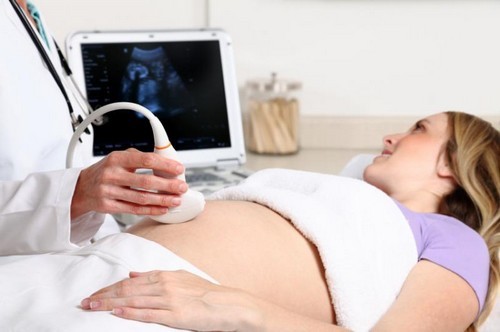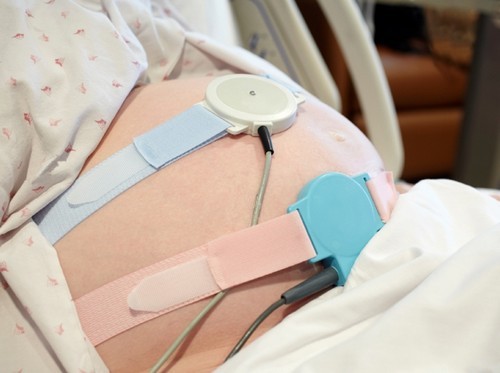It happens that during pregnancy and childbirth, the tissues and organs of the fetus are not adequately supplied with oxygen. This pathology can develop gradually, or appear suddenly.
Thus, chronic and acute fetal hypoxia are shared – a condition more often characteristic of childbirth when the normal course of the process is disturbed.
Pathology can occur in the early stages of pregnancy, and later. Regardless of the time the manifestation of such a condition, the consequences of oxygen deficiency are always unfavorable for the unborn child. The intrauterine hypoxia of the fetus that occurred in the early stages can lead to developmental abnormalities.
The manifestation of hypoxia at a later date slows the growth of the fetus, can cause disorders of the central nervous system and, in the future, manifest itself in a significant deterioration in the adaptive capabilities of the child.
It should be remembered that minor, short-term hypoxia, most likely, will not adversely affect the health of the unborn baby. But prolonged or severe oxygen starvation can lead to irreversible consequences.
In order to prevent the development of pathology, one should know about the causes of hypoxia, signs of a violation, methods of preventing such a condition.

Causes of hypoxia
Oxygen starvation manifests itself as a result of unfavorable processes in the body of a pregnant woman or fetus. There are a sufficient number of factors contributing to the development of hypoxia.
First of all, these are various diseases of the expectant mother (for example, disorders of the cardiovascular system, intoxication, anemia, etc.), as well as malfunctions in the normal functioning of the placental blood flow, for example, due to preeclampsia, prolongation, pathologies of the umbilical cord and placenta. Fetal diseases, such as anemia, malformations, can also cause hypoxia.

A lot is known about the mechanisms of the development of pathology: hypoxia is caused by disturbances in the supply of the uterus with oxygen and metabolic processes of the placenta, hemoglobin deficiency, and manifestations of cardiovascular failure.
Some doctors, arguing about the occurrence of fetal hypoxia, find causes in genetic problems. But, most often, the manifestation of such a pathology is still not hereditary, but acquired in nature.
Some diseases of the expectant mother, which she suffered shortly before pregnancy or during the period of bearing the baby, can lead to hypoxia.
Among these diseases, one can distinguish:
- intoxication of the body due to poisoning, toxicosis, harmful working conditions or functional impairment of the kidneys;
- diseases or pathology of lung development;
- heart failure;
- anemia
- diabetes.
Also, some complications during pregnancy can lead to a pathological condition:
- polyhydramnios (increased amount of amniotic fluid);
- toxicosis in the last months of pregnancy – gestosis;
- presentation of the fetus in the pelvic position;
- multiple pregnancy;
- malfunctions of the placenta or utero-placental blood flow.
Sometimes hypoxia manifests itself as a result of infection of the fetus, congenital malformations, the occurrence of anemia, or incompatibility of the blood of the mother and child (hemolytic disease).
Acute hypoxia can result from premature detachment of the placenta, uterine rupture, more often in late pregnancy, or an abnormal course of labor (a protracted or rapid process), careless squeezing of the fetal head by the woman in labor, loss or compression of the umbilical cord.
Signs
It is important not to miss the first signs of fetal hypoxia. Indeed, in most cases, timely measures taken can avoid the negative consequences that will invariably occur with prolonged oxygen starvation.

The first and main sign of acute hypoxia is a malfunction of the fetal heart, which is characterized by an uneven heartbeat (arrhythmia), increased or slowed heart rate, and muffled tones.
Normally, until the moment of birth, the heartbeat of the child is quite frequent – 110-160 beats per minute. A more intense heartbeat (over 160 beats) and slow (below 80 beats per minute) can be considered symptoms of hypoxia.
Another symptom, which in some cases, can indirectly tell a pregnant woman about the presence of problems in an unborn baby is a change in the usual motor activity of the fetus. With a slight oxygen starvation, his behavior becomes restless, his movements become more frequent and stronger. If the condition of the unborn child does not improve and hypoxia progresses, fetal movements become weaker. It is believed that in the normal course of pregnancy, a woman should feel the fetal movements at least 3 times in one hour. However, before making hasty conclusions about the occurrence of hypoxia and calling a doctor, you should independently observe the movements of the unborn child for several hours.
At the disposal of modern medicine there are many research methods that, with one degree or another, can confirm or refute the presence of oxygen deficiency, determine the degree of danger to the fetus. Among the methods used, the most accurate and informative CTGs (cardiotachography), phonocardiography, dopplerometry, amniotic fluid research (amnioscopy) can be distinguished.
The possibilities of ultrasound scanning are also widely used, thanks to which it is possible to identify irregular respiratory movements performed by the fetus, characteristic of hypoxia.
With proper management of childbirth, doctors monitor the health of the fetus using cardiomonitoring observation. There are other signs by which to judge the dysfunction of a child born into the world. One of the signs of acute oxygen starvation are green waters colored with meconium.
Consequences for the child
The consequences of fetal hypoxia that occurred during pregnancy can be different: in some cases, oxygen deficiency does not affect the health of the unborn child, but more often, it still leads to serious consequences.

It is unacceptable to assume that hypoxia does not require attention, and the improvement of a dysfunctional state will come by itself! The longer and more intense oxygen starvation, the stronger the changes occurring in the body of the unborn child.
Lack of oxygen leads to serious disruption of the circulatory system and microcirculation. Due to chronic intrauterine hypoxia, the blood thickens in the fetus, tissue edema develops, and increased vascular permeability leads to hemorrhage. Under the influence of oxygen deficiency, the electrolyte balance is disturbed in the body of an unborn child, the products of oxidation of organic acids accumulate in the tissues, which leads to intracellular edema. All these changes upset the work of the most important organs, which can cause fetal death or serious asphyxiation of the newborn.
Manifestations of hypoxia in the first trimester of pregnancy can cause impaired development of the brain in the fetus.
Prevention
Prevention of fetal hypoxia is the regular medical supervision of a woman throughout pregnancy. Timely diagnosis and timely treatment started are of great importance for the health of the child. Identifying pregnancy complications, monitoring the condition of the fetus are the tasks of the doctor. The future mother should lead a correct lifestyle, refuse harmful or dangerous work, and try to avoid unrest.
Prevention of fetal hypoxia during childbirth, first of all, depends on the competent actions of the doctor: the right choice of the method of delivery, constant monitoring of the condition of the woman and the child, a quick reaction to the complications that arise.
A woman in labor should advance to learn special breathing techniques and apply the acquired skills in practice at the right time. Controlling her own breathing helps a woman get enough oxygen in labor, which has a positive effect on the condition of a child who is ready to be born.
Methods for treating fetal hypoxia
In the treatment of chronic fetal hypoxia, the knowledge and experience of the doctor are important, as well as the correct attitude and discipline of the expectant mother. A single dose of prescribed medication is usually not enough. Often a woman has to reconsider her own lifestyle during pregnancy, choosing in favor of a relaxing holiday. Sometimes, for the health of the baby, you need to take a bed rest, which helps to improve the blood supply to the uterus.
Often, if hypoxia is suspected, the doctor decides to hospitalize the pregnant woman for a more detailed study of the condition of the fetus, to identify the prerequisites for the manifestation of the pathology.
Treatment of fetal hypoxia begins with a search for the cause – a disease that led to the development of oxygen deficiency. At the same time, therapy is carried out aimed at normalizing metabolic processes and improving the supply of an unborn child with oxygen.
In drug therapy, drugs are prescribed that reduce the activity of the uterus (Papaverine, No-shpa, Ginipral).
They also carry out treatment, the purpose of which is to reduce blood viscosity. If therapy is successful, the probability of blood clots in a pregnant woman decreases, and blood flow is restored in small vessels. For these purposes, the drug Curantil is prescribed.
In case of chronic fetal hypoxia, it is necessary to improve metabolism (vitamin E helps, glucose solution, etc.) and cell permeability (Essentiale-Forte, etc.)
If complex therapy does not bring the desired effect and the condition of the fetus worsens, while the gestational age exceeds 28 weeks, they solve the issue of emergency birth by cesarean section.
Acute hypoxia is a direct indication for urgent hospitalization. During transportation, doctors carry out a set of measures aimed at maintaining a stable condition of the fetus.
findings
Hypoxia can be dangerous to the health and life of the unborn child. Throughout pregnancy, a woman should closely monitor her own state of health and regularly visit an obstetrician-gynecologist. Care should be taken in choosing a competent specialist whose knowledge and experience will help prevent undesirable consequences in the event of a pathology.
Whenever possible, a pregnant woman should avoid stressful situations. Severe unrest does not have the best effect on the health status of the expectant mother, affect the development of the fetus.
Calmness, attention to oneself and a positive attitude will help to cope with the manifestations of hypoxia during pregnancy and give birth to a healthy baby.



